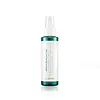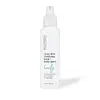What's inside
What's inside
 Key Ingredients
Key Ingredients

 Benefits
Benefits

 Concerns
Concerns

 Ingredients Side-by-side
Ingredients Side-by-side

Water
Skin ConditioningAlcohol
AntimicrobialGlycerin
HumectantPentylene Glycol
Skin ConditioningMelaleuca Alternifolia Leaf Extract
PerfumingPyrus Malus Fruit Water
MaskingSodium Hyaluronate
HumectantCodium Tomentosum Extract
Skin ProtectingEcklonia Cava Extract
Skin ConditioningEnteromorpha Compressa Extract
Skin ProtectingGelidium Cartilagineum Extract
Skin ProtectingLaminaria Japonica Extract
Skin ProtectingMacrocystis Pyrifera Extract
Skin ConditioningMelaleuca Alternifolia Leaf Oil
AntioxidantPearl Extract
AntioxidantButylene Glycol
HumectantPropanediol
Solvent1,2-Hexanediol
Skin ConditioningCholeth-24
EmulsifyingSodium Lactate
BufferingMenthyl Lactate
MaskingSalicylic Acid
MaskingMenthyl PCA
HumectantEthyl Menthane Carboxamide
TonicPolyglutamic Acid
Skin ConditioningLactobionic Acid
BufferingCaprylyl Glycol
EmollientPotassium Benzoate
PreservativeSodium Benzoate
MaskingWater, Alcohol, Glycerin, Pentylene Glycol, Melaleuca Alternifolia Leaf Extract, Pyrus Malus Fruit Water, Sodium Hyaluronate, Codium Tomentosum Extract, Ecklonia Cava Extract, Enteromorpha Compressa Extract, Gelidium Cartilagineum Extract, Laminaria Japonica Extract, Macrocystis Pyrifera Extract, Melaleuca Alternifolia Leaf Oil, Pearl Extract, Butylene Glycol, Propanediol, 1,2-Hexanediol, Choleth-24, Sodium Lactate, Menthyl Lactate, Salicylic Acid, Menthyl PCA, Ethyl Menthane Carboxamide, Polyglutamic Acid, Lactobionic Acid, Caprylyl Glycol, Potassium Benzoate, Sodium Benzoate
Water
Skin ConditioningAlcohol
AntimicrobialGlycolic Acid
BufferingIsopentyldiol
HumectantPolysorbate 20
EmulsifyingPentylene Glycol
Skin ConditioningPropanediol
SolventNiacinamide
SmoothingPhenoxyethanol
PreservativeSalix Nigra Bark Extract
Skin ProtectingSalicylic Acid
MaskingGlycerin
HumectantAzelaic Acid
BufferingAmmonium Hydroxide
BufferingBisabolol
MaskingEucalyptus Globulus Leaf Oil
PerfumingMentha Piperita Oil
MaskingBHT
AntioxidantButylene Glycol
HumectantAvena Sativa Kernel Extract
AbrasiveUndecanoic Acid
AntiseborrhoeicMentha Arvensis Leaf Oil
MaskingAnthemis Nobilis Flower Extract
MaskingAlpha-Arbutin
AntioxidantGlutathione
Kojic Acid
AntioxidantMenthol
MaskingPotassium Sorbate
PreservativePhospholipids
Skin ConditioningRicinus Communis Seed Oil
MaskingTocopheryl Acetate
AntioxidantAscorbyl Palmitate
AntioxidantRetinyl Palmitate
Skin ConditioningWater, Alcohol, Glycolic Acid, Isopentyldiol, Polysorbate 20, Pentylene Glycol, Propanediol, Niacinamide, Phenoxyethanol, Salix Nigra Bark Extract, Salicylic Acid, Glycerin, Azelaic Acid, Ammonium Hydroxide, Bisabolol, Eucalyptus Globulus Leaf Oil, Mentha Piperita Oil, BHT, Butylene Glycol, Avena Sativa Kernel Extract, Undecanoic Acid, Mentha Arvensis Leaf Oil, Anthemis Nobilis Flower Extract, Alpha-Arbutin, Glutathione, Kojic Acid, Menthol, Potassium Sorbate, Phospholipids, Ricinus Communis Seed Oil, Tocopheryl Acetate, Ascorbyl Palmitate, Retinyl Palmitate
Ingredients Explained
These ingredients are found in both products.
Ingredients higher up in an ingredient list are typically present in a larger amount.
Alcohol comes in many different forms. Different types of alcohol will have different effects on skin. This ingredient is usually an astringent alcohol.
These alcohols are drying on the skin. They may strip away your skin's natural oils and even damage your skin barrier. Astringent alcohols may also irritate skin.
Other types of astringent alcohols include:
According to the National Rosacea Society based in the US, you should be mindful of products with these alcohols in the top half of ingredients.
Any type of sanitizing product will have high amounts of alcohol to help kill bacteria and viruses.
Fatty alcohols come from plant oils such as coconut oil. These can help hydrate the skin and are non-irritating. Some fatty alcohols include cetyl and stearyl alcohol.
Learn more about AlcoholButylene Glycol (or BG) is used within cosmetic products for a few different reasons:
Overall, Butylene Glycol is a safe and well-rounded ingredient that works well with other ingredients.
Though this ingredient works well with most skin types, some people with sensitive skin may experience a reaction such as allergic rashes, closed comedones, or itchiness.
Learn more about Butylene GlycolGlycerin is already naturally found in your skin. It helps moisturize and protect your skin.
A study from 2016 found glycerin to be more effective as a humectant than AHAs and hyaluronic acid.
As a humectant, it helps the skin stay hydrated by pulling moisture to your skin. The low molecular weight of glycerin allows it to pull moisture into the deeper layers of your skin.
Hydrated skin improves your skin barrier; Your skin barrier helps protect against irritants and bacteria.
Glycerin has also been found to have antimicrobial and antiviral properties. Due to these properties, glycerin is often used in wound and burn treatments.
In cosmetics, glycerin is usually derived from plants such as soybean or palm. However, it can also be sourced from animals, such as tallow or animal fat.
This ingredient is organic, colorless, odorless, and non-toxic.
Glycerin is the name for this ingredient in American English. British English uses Glycerol/Glycerine.
Learn more about GlycerinPentylene glycol is typically used within a product to thicken it. It also adds a smooth, soft, and moisturizing feel to the product. It is naturally found in plants such as sugar beets.
The hydrophilic trait of Pentylene Glycol makes it a humectant. As a humectant, Pentylene Glycol helps draw moisture from the air to your skin. This can help keep your skin hydrated.
This property also makes Pentylene Glycol a great texture enhancer. It can also help thicken or stabilize a product.
Pentylene Glycol also acts as a mild preservative and helps to keep a product microbe-free.
Some people may experience mild eye and skin irritation from Pentylene Glycol. We always recommend speaking with a professional about using this ingredient in your routine.
Pentylene Glycol has a low molecular weight and is part of the 1,2-glycol family.
Learn more about Pentylene GlycolPropanediol is an all-star ingredient. It softens, hydrates, and smooths the skin.
It’s often used to:
Propanediol is not likely to cause sensitivity and considered safe to use. It is derived from corn or petroleum with a clear color and no scent.
Learn more about PropanediolSalicylic Acid (also known as beta hydroxy acid or BHA) is a well-known ingredient for treating skin that struggles with acne and clogged pores. It exfoliates both the skin's surface and deep within the pores to help clear out buildup, control oil, and reduce inflammation.
Unlike AHAs (alpha hydroxy acids), salicylic acid is oil-soluble. This allows it to penetrate into pores which makes it especially effective for treating blackheads and preventing future breakouts.
Salicylic acid is also known for its soothing properties. It has a similar structure to aspirin and can calm inflamed or irritated skin, making it a good option for acne-prone skin that is also sensitive.
Concentrations of 0.5-2% are recognized by the U.S. FDA as an over-the-counter topical acne product.
It can cause irritation and/or dryness if one's skin already has a compromised moisture barrier, so it's best to focus on repairing that before introducing this ingredient into your routine.
While salicylic acid does not increase sun sensitivity, it’s still important to wear sunscreen daily to protect your skin.
If you are looking for the ingredient called BHA or Butylated Hydroxyanisole, click here.
Learn more about Salicylic AcidWater. It's the most common cosmetic ingredient of all. You'll usually see it at the top of ingredient lists, meaning that it makes up the largest part of the product.
So why is it so popular? Water most often acts as a solvent - this means that it helps dissolve other ingredients into the formulation.
You'll also recognize water as that liquid we all need to stay alive. If you see this, drink a glass of water. Stay hydrated!
Learn more about Water